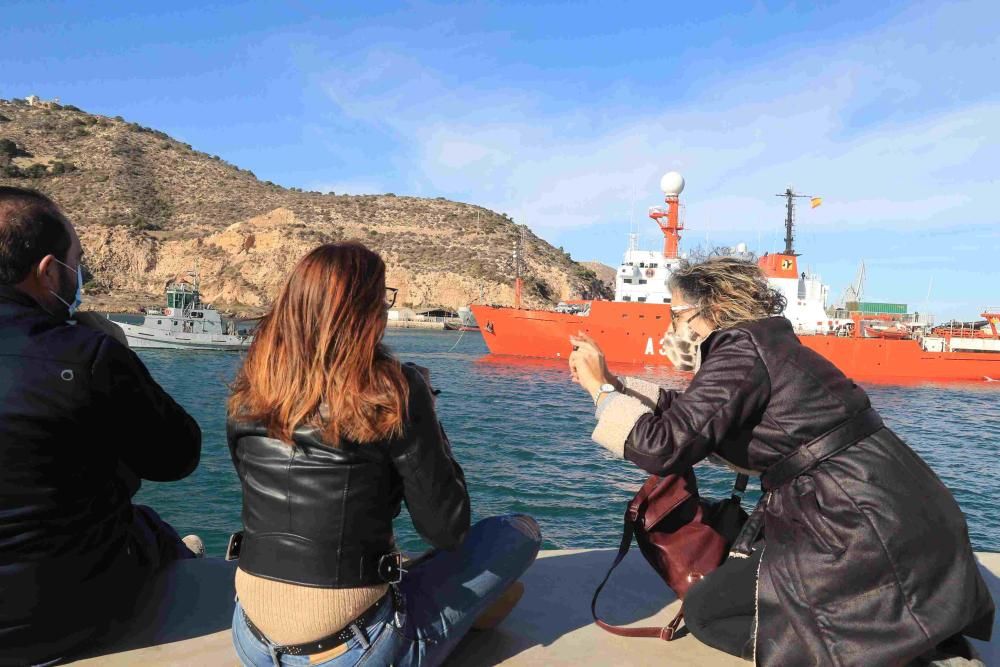
That summer, she conducted its first hydrographic surveys on Media Luna Island. In that same year, it carried out her first campaign in Antarctica. A year later, on May 16, 1991, it was handed over to the Navy. Two years later, it was launched, having Queen Sofía as godmother and in the presence of King Juan Carlos I. In December 1988 it began construction at the Bazán shipyards. The oceanographic research vessel Hespérides. Being this place in the south of the Iberian Peninsula. Regarding its name, it refers to the tree of science that is present as an allegory in the logo of the CSIC (Higher Council for Scientific Research, “Consejo Superior de Investigaciones Científicas” in spanish), at the same time as the Hesperides, which in Greek mythology were the nymphs who cared for a wonderful garden with golden fruit trees that stood on the edge of the ocean that encircled the world. This makes it the first Spanish ship to carry out scientific campaigns in both Glacial Oceans, fulfilling it in 2007 with the celebration of the International Polar Year carried out by the UN. Being the only Spanish ship designed to carry out multidisciplinary scientific research in all the seas and oceans of the world, especially in the Arctic and Antarctica for its reinforced hull to withstand the climatic conditions of the area during the northern and southern summers respectively. In its early work, it participated in magnetometry, gravimetry, hydrography and seismic research. Its laboratories and tools allow it to carry out work in the fields of geology, marine geophysics, hydrography, physical and chemical oceanography, marine biology and the monitoring of the different oceans.

31 years ago, on Main the shipyards of the Spanish Navy base in Cartagena, the first spanish Oceanographic Research Vessel (BIO) was launched, the A-33, better known as the Hespérides.


 0 kommentar(er)
0 kommentar(er)
